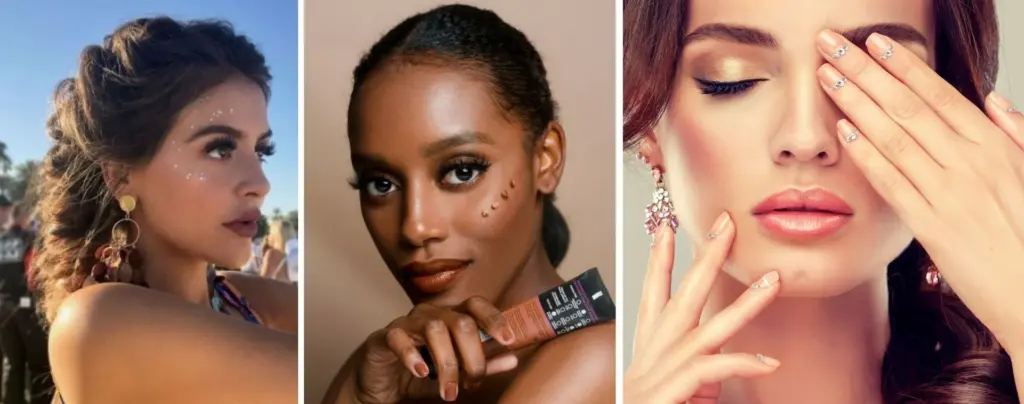How to Coordinate Makeup with Outfits: Color Theory Tips
Makeup and fashion go hand-in-hand, and when they’re coordinated well, they can elevate your overall look, creating a cohesive and stylish appearance. A big part of this coordination comes down to color theory — understanding how different colors work together and complement one another. Whether you’re heading to a special event, going for a casual day out, or experimenting with bold looks, learning how to match your makeup with your outfit using color theory can make a huge difference in how put-together you look. Here’s a guide on how to coordinate makeup with outfits using color theory tips:
1. Start with the Outfit: Identify Key Colors
Before you even think about your makeup, take a good look at your outfit. Identify the dominant colors in your clothes. Is it a neutral base like black, white, or beige? Or are you wearing bold, statement-making colors like red, blue, or green? Once you’ve pinpointed the main hues, you can start thinking about how to complement or contrast them with your makeup.
- Neutral outfits: If your outfit consists of neutral colors (like beige, black, white, or gray), you have more flexibility with your makeup. You can either go for bold or natural looks, depending on the occasion.
- Bold outfits: For outfits in bright or intense colors, your makeup should either complement or balance the boldness, depending on the effect you’re going for.
2. Match Warm with Warm, Cool with Cool
A great basic rule in color theory is to pair warm tones with warm tones and cool tones with cool tones. This ensures that your makeup and outfit blend well together without clashing.
- Warm colors: If your outfit features warm tones like red, orange, yellow, or earthy shades like browns and golds, consider using warm-toned makeup to match. Think gold or bronze eyeshadows, warm peach or coral blushes, and warm-toned lipsticks like reds, oranges, or terracotta shades.
- Cool colors: For cool-toned outfits (think blues, greens, purples, or icy pastels), opt for cooler makeup shades such as silver eyeshadows, cool-toned pink blushes, and lipsticks in berry, plum, or mauve shades.
This color-matching technique creates a harmonious, cohesive look that doesn’t distract from the overall outfit.
3. Use the Color Wheel for Contrasting Looks
The color wheel can be your best friend when you want to create a bold, eye-catching look. Complementary colors — those that sit opposite each other on the color wheel — can provide striking contrast.
- Red and green: If you’re wearing a red outfit, consider pairing it with green or olive eyeshadow or a subtle green eyeliner for a cool contrast. This is a dramatic yet complementary way to bring out the outfit’s vibrancy.
- Blue and orange: If you’re in a blue dress or shirt, consider using warm, orangey makeup tones like bronze eyeshadow or a peachy lipstick to create a contrast that draws attention without being overpowering.
- Yellow and purple: A yellow outfit can be balanced with a soft purple eyeshadow or cool-toned makeup for a fun, complementary look.
4. Stick to Monochromatic for a Streamlined Look
If you’re after a more polished, sophisticated vibe, monochromatic makeup and outfit choices can create a streamlined look. Choose a single color family and use different shades of that color for both your outfit and makeup.
- Red monochrome: If you’re wearing a red dress, you can complement it with a red-toned lipstick, a touch of pink blush, and a subtle reddish-brown eyeshadow.
- Pink monochrome: A soft pink outfit can be paired with peachy blushes, soft pink eyeshadows, and nude pink lips to create a smooth and uniform color palette.
This technique makes the entire look feel intentional and harmonious, without the need to experiment with contrasting tones.
5. Consider the Occasion: Day vs. Night
The time of day can also influence how you coordinate your makeup with your outfit.
- Daytime looks: For daytime, especially if you’re wearing lighter, pastel, or neutral-colored outfits, opt for natural makeup with soft shades. A neutral eyeshadow palette, light blush, and nude or pink lipstick are perfect for a fresh, everyday look.
- Nighttime looks: For evening events or when wearing darker or more formal outfits (like a black dress or a deep blue suit), you can go bolder with your makeup. Darker smokey eyes, dramatic eyeliner, and deep red or plum lips can create a striking contrast that enhances your evening look.
6. Match Your Makeup to Your Fabric
Fabric texture and finish also play a role in how you should approach your makeup. Different materials reflect light in various ways and can influence your makeup choice.
- Shiny fabrics (silk, satin, etc.): If your outfit is made of a shiny fabric, such as satin or silk, you can lean into more luminous, dewy makeup to reflect the smooth, glossy texture. Opt for highlighter on the cheekbones, a glossy lip, and shimmery eyeshadows for a complementary glow.
- Matte fabrics (denim, wool, etc.): For matte fabrics, go for matte makeup to create balance. Think matte eyeshadows, blush, and lipstick, which will provide a more subtle and polished finish that matches the matte quality of your clothes.
7. Neutral Outfits? Play with Bold Lipstick
If you’re wearing a neutral outfit and want to add a pop of color without clashing, bold lipstick is the perfect solution. A red, coral, or berry lipstick can serve as the focal point of your look, while your makeup remains relatively neutral with simple eyeshadow and blush.
Alternatively, you can balance out a bold lipstick with neutral eyeshadow and minimal makeup elsewhere on your face to avoid overwhelming the look.
8. Personal Style Matters
Above all, remember that color coordination in makeup and outfits is also about personal style. Don’t be afraid to experiment with colors that make you feel confident and beautiful. Sometimes breaking the rules of color theory and adding your personal flair can create stunning and unique looks!
Conclusion Coordinating makeup with your outfit doesn’t have to be complicated. By understanding the basics of color theory — such as matching warm tones with warm tones, using complementary colors for contrast, or opting for monochromatic looks — you can effortlessly create a cohesive and flattering appearance. Remember, makeup is an art, and fashion is about expressing yourself, so use these tips as a guide but feel free to let your creativity shine! Happy styling!


